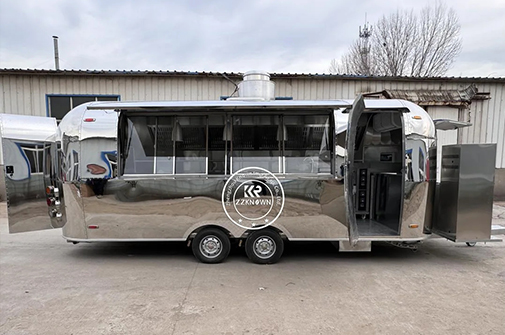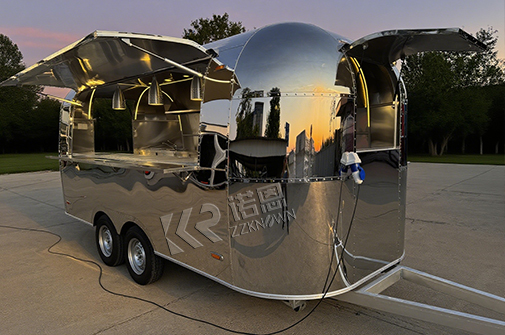Running a successful kebab trailer hinges on balancing speed, flavor, and safety—all within a compact, mobile kitchen. From marinating meats to assembling wraps under time pressure, every step must be optimized. Drawing from industry benchmarks and real-world kebab truck case studies, here’s how to perfect your prep process.
Cut Uniformly: Slice meats (chicken, lamb, beef) into 1.5” cubes for even cooking.
Acid + Oil Base: Use yogurt (for chicken) or olive oil (for red meat) with lemon juice/vinegar.
Spice Mix: Combine cumin, paprika, garlic, and a pinch of cinnamon for depth.
Marinate Time:
Chicken: 4–12 hours
Lamb/Beef: 8–24 hours
Pro Tip: Vacuum-seal marinating meat in bags to save fridge space and intensify flavor absorption.
| Zone | Tools | Purpose |
|---|---|---|
| Raw Meat Prep | Red cutting boards, dedicated knives | Marinating, skewering |
| Vegetable Prep | Green cutting boards, peelers | Chopping tomatoes, onions, lettuce |
| Assembly | Gloves, portion scoops | Wrapping kebabs, adding sauces |
Case Study: A London kebab trailer reduced health code warnings by 90% after color-coding stations.
Pre-Thread Skewers: Prep 100+ skewers during off-hours and store them raw in labeled containers.
Use Flat Metal Skewers: Cook 20% faster than wooden ones and are reusable.
Batch Grill: Group skewers by protein type (e.g., chicken vs. beef) to avoid overcooking.
Tool: Invest in a commercial skewering machine (1,500–1,500–3,000) if volume exceeds 200 skewers/day.
| Type | Pros | Cons |
|---|---|---|
| Gas Grill | Consistent heat, quick startup | Less smoky flavor |
| Charcoal | Authentic taste, high sear | Longer prep, temperature swings |
Hybrid Solution: Many trailers use gas for base heat and add smoking chips (e.g., hickory) for flavor.
High Heat (500°F): Sear meats.
Medium Heat (350°F): Finish cooking.
Warming Zone (200°F): Hold cooked skewers.
Pro Tip: Grill vegetables (peppers, onions) separately to avoid meat juice contamination.
Portion Control: Use squeeze bottles with nozzle tips for consistent saucing (e.g., 1 oz garlic sauce per wrap).
Cold Chain for Sauces: Store tzatziki and hummus in under-counter fridges at 34°F.
Daily Prep: Make fresh sauces in small batches to prevent separation or spoilage.
Recipe Hack: Add a spoon of mayo to garlic sauce for creamier texture that holds up in heat.
Pre-Chop Veggies: Store onions, lettuce, and tomatoes in airtight containers with damp paper towels to retain crunch.
Warm Flatbreads: Keep stacks wrapped in foil on a griddle at 150°F.
Backup Skewers: Have 20% more prepped than your daily average to handle rushes.
Emergency Fix: If you run out of lamb, offer a “Spicy Chicken Special” at a discount to keep lines moving.
Portion Sizes: Use scales to measure meat (150g per kebab) and rice (200g per bowl).
Glove Discipline: Change gloves after handling raw meat, money, or trash.
30-Second Rule: Practice assembling a wrap (meat + veggies + sauce) in under 30 seconds.
Tool: Record a 5-minute training video demonstrating ideal prep steps for new hires.
This Melbourne-based kebab trailer boosted sales by 40% after:
Installing a marinating vacuum tumbler to cut prep time by half.
Adding a self-serve sauce bar with labeled pumps (reducing staff workload).
Using pre-portioned veggie kits (sliced tomatoes, onions, parsley in compostable containers).
By prioritizing systematic prep, relentless hygiene, and smart workflow design, your kebab trailer can dish out crave-worthy wraps without compromising safety or speed.




